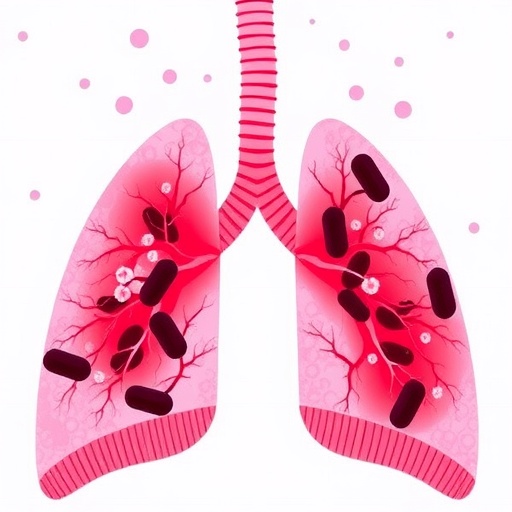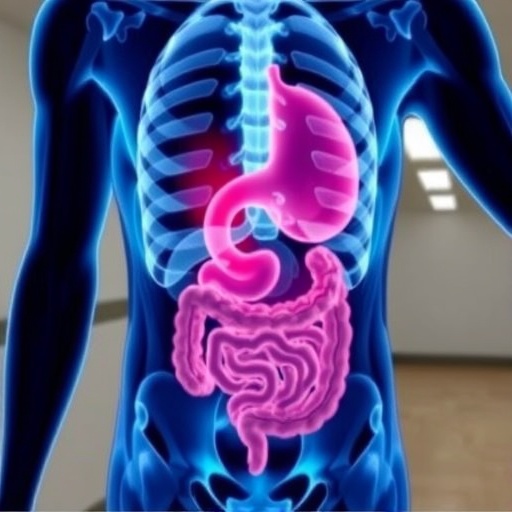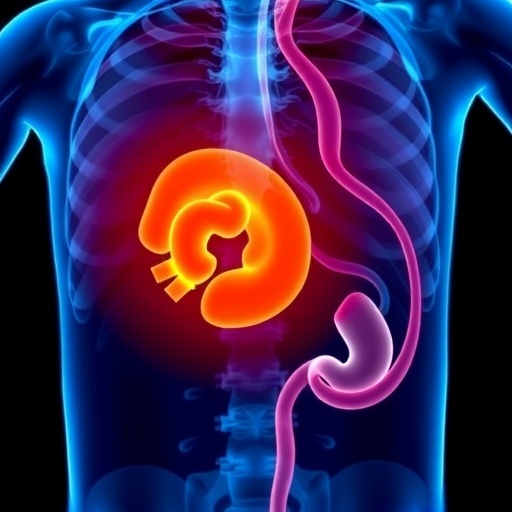In a groundbreaking study published in Medical Oncology, researchers have unveiled a complex and reversible mechanism through which hypoxia—an oxygen-deprived state that is a hallmark of many solid tumors—induces cell cycle arrest in lung cancer cells. This phenomenon appears to be intricately regulated through alterations in the cellular redox environment and gene expression profiles, shedding new light on how tumor cells survive and adapt to hostile microenvironments. The cutting-edge findings from Maurya, Mehta, and Singh’s team could open new avenues in cancer therapy by targeting the reversible arrest phases in lung malignancies.
Lung cancer remains one of the leading causes of cancer-related mortality worldwide, in large part due to its complex biology and profound resistance to treatment. A defining feature of many cancers is the formation of hypoxic regions within the tumor, where oxygen levels drop significantly below physiological norms. Tumor hypoxia has long been associated with aggressive behavior, including enhanced metastatic potential and resistance to radiation and chemotherapy. However, the cellular strategies by which hypoxia influences cancer cell cycle dynamics have remained elusive until now.
This novel research utilized sophisticated in vitro lung cancer cell models subjected to controlled hypoxic conditions to unravel the interplay between oxygen deprivation and cell cycle regulation. The investigators found that hypoxia triggers a marked, yet reversible, arrest in the cell cycle, halting cells primarily at the G1 phase. This arrest allows cancer cells to enter a quasi-dormant state, curbing replication but preserving viability under stressful microenvironmental conditions. The reversible nature of this arrest suggests that cells retain the capacity to re-enter the cell cycle upon oxygenation, highlighting a potential survival mechanism during fluctuating tumor oxygenation.
Central to this regulatory process are redox balance changes within the cell. The study provides compelling evidence that hypoxia modulates the intracellular redox state, characterized by altered reactive oxygen species (ROS) levels and shifts in intracellular antioxidants. These redox changes appear to act as molecular signals that mediate transcriptional reprogramming necessary for initiating and maintaining cell cycle arrest. The authors demonstrate a delicate coordination between oxidative stress responses and the expression of critical cell cycle regulators, such as cyclins and cyclin-dependent kinases.
Correlated with redox modulation, comprehensive transcriptomic analysis revealed a hypoxia-driven gene expression signature. Genes involved in cell cycle checkpoint control, hypoxia response pathways, and antioxidant defenses exhibited differential regulation under hypoxia. Notably, the upregulation of specific tumor suppressors and hypoxia-inducible factors (HIFs) further augmented the arrest and survival phenotype. These findings underscore a tightly controlled genetic switchboard that facilitates cellular adaptation, effectively allowing lung cancer cells to ‘pause’ their division to weather adverse conditions.
The reversibility of the hypoxia-induced cell cycle arrest was rigorously tested by reoxygenation experiments. Upon restoration of normoxic conditions, previously arrested cells rapidly resumed proliferation. This plasticity reflects a dynamic adaptability that could contribute to tumor heterogeneity and treatment resistance, as dormant cancer cells evade cytotoxic agents only to later reinitiate growth. Targeting this reversible mechanism could thus represent a promising strategy to eradicate minimal residual disease and prevent relapse.
Implications of this research extend beyond lung cancer alone. Hypoxia is a universal characteristic in many solid tumors; therefore, understanding the balance between hypoxic signaling, redox biology, and cell cycle control reveals fundamental tumor biology principles. By delineating how cancer cells leverage redox-dependent gene regulation to survive oxygen deprivation, future therapies may exploit these pathways to sensitize tumors or prevent the emergence of resistant cancer cell populations.
From a broader biological perspective, the findings emphasize the nuanced role of redox homeostasis in cancer progression. Traditionally viewed as a byproduct of metabolic dysfunction, ROS and other oxidants are increasingly recognized as critical signaling molecules that integrate environmental cues with intracellular decision-making processes. This study highlights how subtle changes in redox state orchestrate gene expression programs culminating in strategic cell cycle arrest—a concept that may have ramifications in other diseases characterized by hypoxia and oxidative stress.
The study’s experimental rigor was noteworthy, with multi-omics approaches integrating proteomic, transcriptomic, and biochemical assays to construct a holistic view. High-resolution imaging and flow cytometry confirmed cell cycle shifts, while redox-sensitive probes quantified intracellular oxidative changes. Such integrative methodology elevates the impact of the findings and sets a benchmark for future hypoxia research in oncology.
Importantly, the researchers also addressed the clinical relevance of their discoveries by analyzing gene expression patterns in human lung cancer samples. Consistent with their in vitro models, hypoxia-related gene signatures correlated with tumor regions exhibiting low proliferation, validating the translational significance. This correlation strengthens the hypothesis that transient hypoxic arrest contributes to tumor recurrence and progression in patients.
Therapeutically, agents modulating redox balance or inhibiting hypoxia-inducible transcription factors could disrupt the reversible arrest mechanism and sensitize tumors to conventional therapies. There is a growing interest in redox-active drugs and HIF inhibitors, and this study provides a mechanistic foundation supporting such approaches. By preventing cancer cells from entering protective dormancy, treatment efficacy could be significantly enhanced.
Moreover, these insights could aid in the development of predictive biomarkers to stratify patients based on tumor hypoxia dynamics and responsiveness to redox-targeted therapies. Personalized medicine approaches incorporating hypoxia and redox parameters may optimize therapeutic outcomes, reduce resistance, and improve survival rates in lung cancer.
In conclusion, the study by Maurya and colleagues represents a major leap forward in understanding the intersection of hypoxia, redox biology, and cell cycle control in lung cancer. Their work elucidates a reversible adaptive mechanism that cancer cells deploy to survive environmental stress. This biological insight carries profound therapeutic potential, offering hope for novel interventions that can overcome tumor dormancy and improve clinical outcomes in one of the deadliest cancer types worldwide.
As research continues, the challenge will be to translate these molecular insights into effective treatments capable of disrupting hypoxia-driven dormancy without harming normal tissues. Continued exploration of the cellular redox landscape and its genetic regulators will be vital. This study lays essential groundwork, prompting a paradigm shift in how the cancer research community views tumor cell survival under hypoxia and opening exciting new frontiers for innovative cancer therapy.
Subject of Research:
Lung cancer cell response to hypoxia, focusing on reversible cell cycle arrest mediated by cellular redox balance and gene expression modulation.
Article Title:
Hypoxia-drives reversible cell cycle arrest in lung cancer cells via modulation of cellular redox and gene expression
Article References:
Maurya, D.K., Mehta, V. & Singh, B. Hypoxia-drives reversible cell cycle arrest in lung cancer cells via modulation of cellular redox and gene expression. Med Oncol 42, 501 (2025). https://doi.org/10.1007/s12032-025-03058-9
Image Credits: AI Generated





